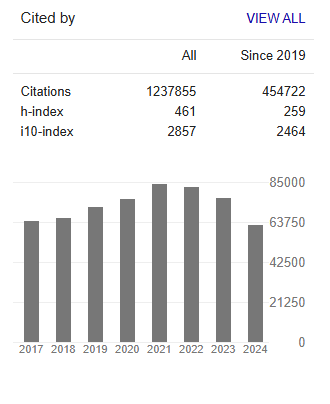Heritability and Genetic Advance as Genetic Indicators for Improvement in Two Cotton Crosses
Abstract
Abdelmoghny, AM, Max, S. Mariz and SS. Hassan
The primary breeding goal for the Egyptian cotton breeding program is how to genetically improve both yield and fibre quality traits, while most of these agronomically traits are biometric traits. The objective of the present study is to evaluate variability and estimate frequency of transgressive segregants in order to isolate early superior individual plants which exceeding the better parent for some yield and fiber quality traits in two intraspecific cotton crosses in early transgressive segregating generation (F2 ). The F1 was highly significant superior than the better parent (Giza 97 and Giza 94) of the two crosses for all the studied traits except boll weight and lint %. Most of the studied traits in F2 generation showed high values of broad sense heritability coupled with low GAM % indicated that these traits controlled by non-additive gene action. All the studied traits had positive skewness sign except for lint %. Presley index and uniformity index for the two cotton crosses and upper half mean for cross II showed negative skewness. The negative skewness indicated that the population had more plants frequency with higher mean values than population mean and controlled by dominancy alleles. While, the traits that had positive skewness are controlled by additive gene action. The two cotton crosses showed transgressive segregants for all the studied traits. Cross I has higher transgressive index for yield traits than cross II, while cross II has the same trend for fiber quality traits than cross I. These results indicated that the both parents of the two cotton crosses had different alleles and genes governing the respective studied traits, which will help cotton breeder to combine beneficial alleles into a single genotype by rigorous selection process. This strategy could be used to improve many economic biometric traits by using better and stringent selection procedure to enhance Egyptian cotton productivity which is major concern in Egypt. The breeder can use transgressive segregation as an indicator of genetic variability to select the most superior plants.c




